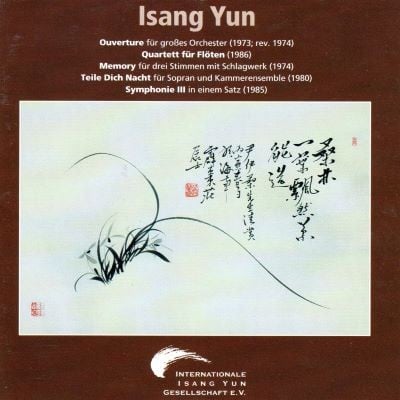Bote & Bock
The four sections of this composition of almost a quarter of an hour — its core is formed by the initial minor third c - e-flat / c-sharp - e transposed by a half tone — differ in their instrumentation, tone colors, motion characters, and time. The first section maintained in dark colors (6/4, with two bass flutes and two alto flutes) is followed by a noticeably brighter second section (4/4, full-size flutes). It was Yun’s intention that the fast, almost shrill third section (3/4, two full-size flutes and two piccolo flutes) be understood as a symbol of overweeningness, as an expression of egoism and excess. In the fourth section (6/4, alto, full-size, and piccolo flutes) he refers to a state beyond this behavior: a tremolo sound band appears in the upper voices "from a great distance" and fills the space of a minor third. The bass flute begins "resignedly" with c-sharp - e and persists in its recital on e. "Like an echo," the alto flute assumes this character, developing elements of a contrasting middle part, and a circling fifth motif around c-sharp is heard as "as far away as the harmonies of the spheres." Its rudiments are imbedded reminiscently in the concluding phase. It was here that Yun tested for the first time what he later called "room sound," "nature sound," or "cosmic sound."
The work also admits of Buddhistic reading as the process of an intensification reaching the point of ecstasy, only then to end in a state of meditative peace.
Walter-Wolfgang Sparrer

Roswitha Staege, Irmela Bossler, Ayla Caymaz, Susanne Winkler
Internationale Isang Yun Gesellschaft IYG 002
